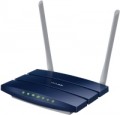WAN
The WAN port characterizes the ability of the device to receive a wired signal. There may be models with both one port and
two WAN ports, and in rare cases, more connected providers. Such an expanded number of WAN connectors affects the cost and, accordingly, is found in more part among professional-level routers.
In terms of speed, when choosing a device, the priority is the speed of the output LAN port or Wi-Fi. However, faster WAN ports (
1 Gbps,
2.5 Gbps,
5 Gbps,
10 Gbps) allow you to divide the load on several outputs at once without reducing speed performance, as may be the case with
WAN port 100 Mbps.
LAN
In this case, LAN means standard network connectors (known as RJ-45) designed for wired connection of LAN devices — PCs, servers, additional access points, etc. The number of ports corresponds to the number of devices that can be directly connected to wired equipment. way.
In terms of speed,
100 Mbps (Fast Ethernet) and
1 Gbps (Gigabit Ethernet) are the most popular options today. At the same time, thanks to the development of technology, more and more gigabit devices are being produced, although in fact this speed is critical only when transferring large amounts of information. At the same time, some models, in addition to the standard speed of the main LAN ports, may have
a 2.5 Gbps, 5 Gbps and even 10 Gbps LAN port with increased bandwidth.
USB 2.0
The number
of USB 2.0 ports provided in the design of the device.
USB in this case plays the role of a universal interface for connecting peripheral devices to the router. The specific USB devices supported and how they are used may vary. Examples include working with a flash drive that plays the role of a drive for working in FTP or file server mode (see "Functions / Capabilities"), connecting to a printer in
print server mode(see ibid), connecting a 3G modem (See "Data input (WAN-port)"), etc.
Specifically, USB 2.0 allows you to transfer data at speeds up to 480 Mbps. This is noticeably less than that of more advanced standards (starting with USB 3.2 gen1 described below), and the power supply of such connectors is low. However, even such characteristics are often quite enough, taking into account the specifics of the use of Wi-Fi devices. In addition, peripherals for newer versions can also be connected to the USB 2.0 port — the main thing is that the power supply is enough. Therefore, although this standard is considered obsolete, it is still widely used in modern wireless equipment. There are even models that provide
2 or even more USB 2.0 ports; this allows you to simultaneously use several external devices at once — for example, a 3G modem and a USB flash drive.
Detachable antenna
The presence
of a removable antenna(or several antennas) in the design of the device.
Only external antennas can be made removable (see "Type of antennas"). This design is especially convenient for storage and transportation: it allows you to remove external equipment, making the device less bulky. In addition, many devices with this feature allow replacement of standard antennas with others (for example, more powerful ones or with a more optimal radiation pattern). Some of these models are even initially sold without antennas — in the expectation that the user will choose them himself, at his discretion; such equipment is not needed for domestic use, but it can be very convenient when selecting high-quality professional equipment. On the other hand, the detachable design reduces the reliability of the antenna mounting, increases the possibility of failures at the connection point, and increases the cost of the device. Therefore, most modern Wi-Fi equipment is still equipped with
fixed antennas.
Gain
Gain provided by each device antenna; if the design provides for antennas with different characteristics (a typical example is both external and internal antennas), then the information, usually, is indicated by the highest value.
Amplification of the signal in this case is provided by narrowing the radiation pattern — just as in flashlights with adjustable beam width, reducing this width increases the illumination range. The simplest omnidirectional antennas narrow the signal mainly in the vertical plane, "flattening" the coverage area so that it looks like a horizontal disk. In turn, directional antennas (mainly in specialized access points, see "Device type") create a narrow beam that covers a very small area, but provides a very solid gain.
Specifically, the gain describes how powerful the signal is in the main direction of the antenna compared to an perfect antenna that spreads the signal evenly in all directions. Together with the power of the transmitter (see below), this determines the total power of the equipment and, accordingly, the efficiency and range of communication. Actually, to determine the total power, it is enough to add the gain in dBi to the transmitter power in dBm; dBi and dBm in this case can be considered as the same units (decibels).
In general, such data is rarely required by the average user, but it can be useful in some specific situations that specialists have to deal with. Detailed calculation methods for suc...h situations can be found in special sources; here we emphasize that it does not always make sense to pursue a high antenna gain. First, as discussed above, this comes at the cost of narrowing the scope, which can be inconvenient; secondly, too strong a signal is also often undesirable, for more details see "Transmitter power".

